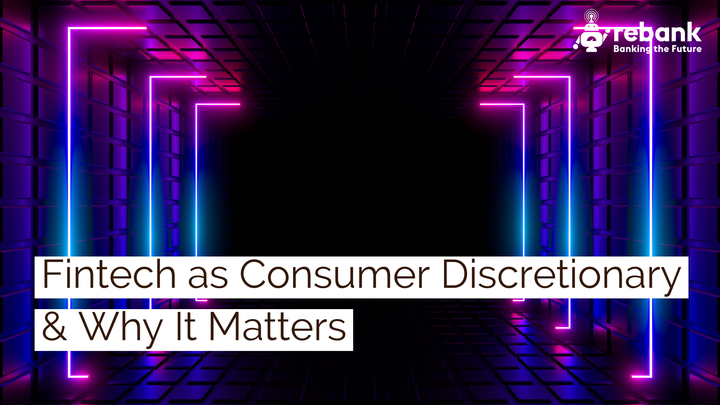The Next Banking Innovation Opportunity

Banking is in the midst of an overhaul, with incumbent banks and startups alike looking to reimagine the customer experience.
Fintech firms are pitching shiny new retail propositions designed to offer improved user experience, often delivered via intuitive mobile apps leveraging native device capabilities like alerts, geolocation and biometric ID.
Retail banking is a huge, highly visible and easily accessible market, so it’s no surprise that banks and fintechs have targeted this segment first with new user experience innovations. Plus, retail customers are nimble decision makers and are often willing to quickly adopt new, untested technologies, making them an ideal initial target market for banking innovation.
The retail opportunity has been discussed at length elsewhere, including in great pieces by Jim Marous & Brett King here and David M. Brear here.
But what about business banking?
Businesses are concerned with maximizing production, promotion and distribution given fixed financial resources. Optimal management of working capital and access to term financing can greatly enhance value creation for businesses. Like retail customers, businesses also require transaction accounts where they can make and receive payments.
Large corporate customers running sophisticated internal treasury functions often more closely resemble banks than customers, but small- and medium-sized enterprises (SMEs) have traditionally relied heavily on banks for advice, service and solutions to effectively run their businesses.
SME banking needs
First and foremost, SMEs rely on banks for financing, as they have for centuries. Ancillary products and services have been developed over time to make it easier for businesses to manage their finances, but borrowing remains at the core of most SME banking relationships.
Banks and SMEs alike understand that good management and a strong financial position are prerequisites for accessing credit, but even when SMEs have both, they are often unable to engage their relationship bank when borrowing needs arise.
When interviewing SME customers, one hears countless stories of unresponsiveness and lack of communication from relationship banks in times of customer need. It is here, where product meets delivery, that SME customers say incumbent banks fall short.
Products versus Delivery
Over decades of serving businesses, incumbent banks have generally built product offerings well-suited to meet the needs of SME customers.
Unfortunately, product design is just one part of the equation. To adequately serve SME customers, banks need to understand their businesses, anticipate their needs, deliver products quickly, and offer great ongoing customer support.
Delivery
Traditionally, SMEs have been served by relationship managers working as single contact points through which customers can access any of a bank’s products and services.
To explain what relationship banking should be, SMEs, with striking regularity, use the analogy of the family doctor/general practitioner. The general practitioner is a single point of contact for medical care and advice and the first port of call in the event of an issue. When medical needs arise, the general practitioner is able to make an initial diagnosis, provide advice, and refer patients to specialists for further treatment. Good general practitioners stay in the loop, coordinating care on an ongoing basis and maintaining dialogue with patients through to resolution of the issue and beyond.
Similarly, bank relationship managers should be easily accessible by customers and highly responsive to inquiries and requests. They should understand customers’ businesses and relevant industry landscapes and provide useful advice on finance- and some business-related issues. A relationship manager should understand how a bank’s products and services can improve customers’ businesses and should mobilize and coordinate the necessary resources across the bank to deliver the best solution. Furthermore, the relationship manager should ensure great communication with the customer at all times.
In response to cost and capital pressures, incumbent banks have been reducing the number and experience level of relationship managers available to support SMEs. As a result, the quality, frequency, and timeliness of communication and advice has plummeted in recent years, according to SMEs, resulting in an increasing number of unsatisfied business customers.
The Value of Service to SMEs
According to a comprehensive 2014 SME banking study undertaken by the FCA and CMA in the UK, service, not pricing, is the main driver of customer satisfaction for SMEs:
“We have been informed during the market study that SMEs place a particularly high value on the non-price offerings of their banks, particularly the service offered by their banks. Indeed, several of the banks have emphasized that service, rather than pricing considerations, [is] of the most fundamental importance to their SME customers.”
While retail banking is highly price sensitive and increasingly low-margin, SME relationship banking, with its emphasis on service over price, is arguably a more attractive segment for new entrant banks.
Ripe for Innovation
Falling IT costs and a reduced need for branches are changing cost structures in banking and opening the sector up to new entrants in many countries. So far, new entrant banks have focused on retail banking, but the cost advantages they’re leveraging create a potentially larger opportunity in SME relationship banking.
Going forward, expect to see new entrants challenging incumbents in this space and providing SME customers with the resources, service and support they seek and deserve.


